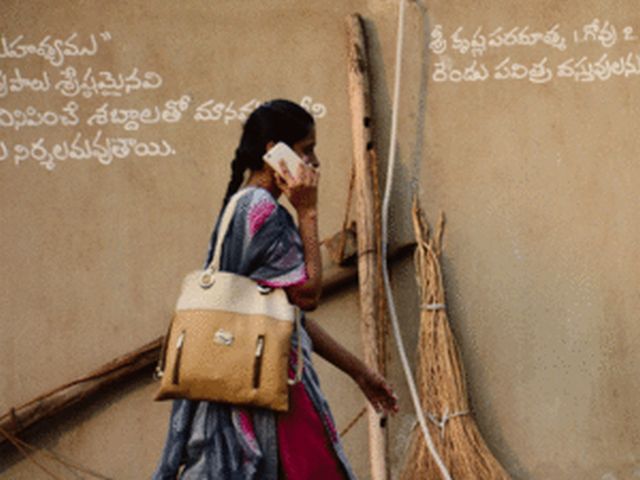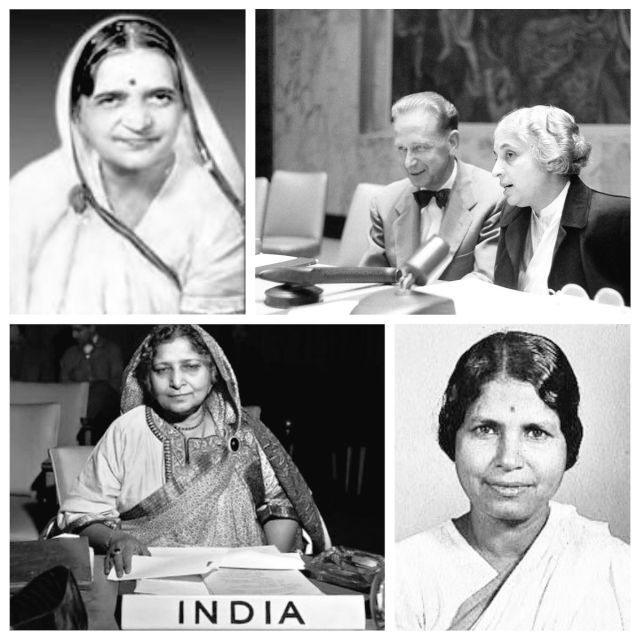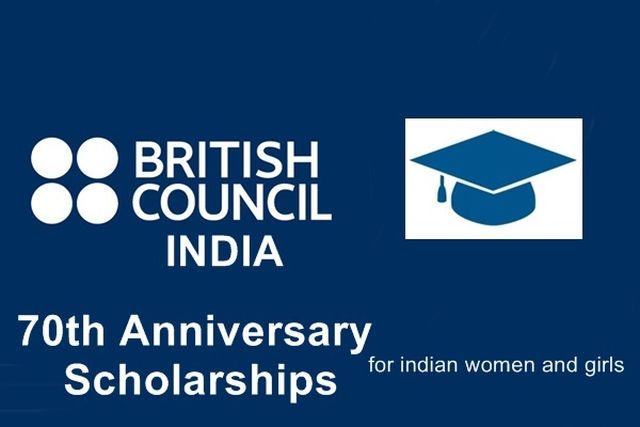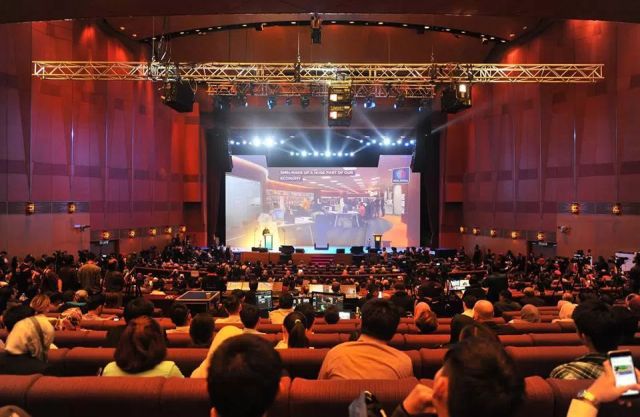
by admin | May 25, 2021 | Opinions

Representational Image
By Kritika Shah,
Much frenzy has been created around India’s declining female labour force. In 2017, the International Labour Organisation (ILO) estimated this at 27.2 per cent, lower than its neighbours, including Bangladesh and Nepal.
However, contrasting low unemployment rates suggest that structure-agency issues are confining female employment and, subsequently, the Indian economy. It has been estimated that upwards of $700 billion can be added to the national income if the gender gap can be overcome by 2025.
Thus, in partnership with Southern Voice, Public Affairs Centre (PAC) is conducting a case study to understand the barriers and enablers to decent work for Indian women, culminating in a presentation at the UN High Level Political Forum 2019.
Thanks to India’s booming population of 1.4 billion, 65 per cent of which comprises the youth, it is home to a demographic dividend which can create substantial economic gains. However, without adequate policy instruments to leverage this advantage, youth unemployment will surge, causing a “demographic deficit” and increased dependency ratios. Against this background, this case study will examine the participation women in India’s workforce.
Given the lack of dependence on agriculture as a livelihood due to climate change and the informal nature of the job, it was hypothesised that women in the rural areas might be vulnerable to poor labour outcomes. Alternatively, due to improved access to formal job-related resources, it was hypothesised that women in urban areas are more likely to be a part of the workforce.
Seema, an engineer working in Bengaluru, can achieve improved labour outcomes due to access to public transportation, access to resources for household management, access to a network of experts who can help guide her career and access to financial security.
Alternatively, Bhagya, an agricultural labourer in Bhandara district (Maharashtra), probably faces a different reality: She has limited access to infrastructure to reach her workplace; she knows few people who work outside the primary sector; she has informal workplace systems, including no leaves; and since she is a daily wager, financial inclusion for Bhagya is limited.
Taking a deeper look, the districts with the highest female worker population rates were not surprising as they belonged to culturally matriarchal states such as Nagaland. It is estimated that upwards of 500 women per 1,000 are working in Nagaland’s districts.
However, it was found that districts with relatively high female workers had more than double the number of rural workers than urban workers. While there are 622 female workers for every 1,000 women in rural Zunheboto, the figure drops to 244 in urban Zunheboto, a third of the rural workforce size.
What’s more, none of the major urban epicentres of India was found to have female worker population rates that were above the 50th percentile of worker population rates. Major metropolises, including New Delhi (196 workers per 1,000), Mumbai (188 workers per 1,000) and Kolkata (179 workers per 1,000) had significantly lower female worker population rates, even lower than the national average.
Thus, Seema might not have it better than Bhagya after all. Urbanisation may not be creating conducive circumstances for female employment. Or perhaps aspects of rural socio-economics may be enabling women to work.
While external factors may still affect labour outcomes, there are deeper issues of agency embedded at various levels that are affecting Indian women and keeping them from employment. These issues may exist at the level of the household, community, state or nation.
By piecing together perspectives gained from the regionally diverse country, a more valid picture of India’s female labour economy from the perspectives of the average Indian woman, our Seemas and Bhagyas, will be architected. In this way, policy implementation and action can align to be more effective in actually generating impact at the grassroots level instead of correcting the gender gap in India’s workforce only at a superficial level.
(Kritika Shah is Programme Officer, Urbanisation and Development, at PAC. The views expressed are personal. She can be contacted at kritika@pacindia.org)
—IANS

by admin | May 25, 2021 | Entrepreneurship, News, Politics, Women Entrepreneur

Hansa Mehta, Lakshmi Menon, Begum Hamid Ali and Vijayalakshmi Pandit
By Arul Louis,
United Nations : Four Indian women pioneers at the UN — Hansa Mehta, Lakshmi Menon, Begum Hamid Ali and Vijayalakshmi Pandit — were hailed on Tuesday as role models who worked to champion gender equality at a nascent world organisation.
At a panel discussion here on the Southern Legacy of Women and the Origins of the UN, Rebecca Adami, a senior lecturer at the University of Stockholm, said the push for gender equality came not from Western nations, but from the countries of the South.
She credited Hansa Jivraj Mehta with ensuring the inclusion of women in the UN’s Universal Declaration of Human Rights (UDHR), which in its initial draft spoke only of the rights of the “man” and Eleanor Roosevelt, the champion of human rights from the US, who chaired the drafting committee was oblivious to the omission of women.
“Hansa Mehta, the only female on the Commission on Human Rights besides Eleanor Roosevelt, objects to the use of ‘man’ in the draft arguing that member states can use this to restrict the rights, rather than expand them since women are not considered necessarily included in that wording,” Adami said.
As a result of Mehta’s persistence, the draft was amended to mention “human persons” and “equality of men and women” in the UDHR adopted in 1948.
Adami said that Begum Hamid Ali, the Indian delegate to the UN Commission on the Status of Women in 1947, championed the inclusion of women, whom she had described as the “immense source of wealth lying at the thresholds unused”.
India’s Permanent Representative Syed Akbaruddin said that the Indian women pioneers “served as bridges between the processes of global norm-building at the UN and the institution building processes at the national level” in India.
Mehta was also a member of the Constituent Assembly and the Indian Constitution draws upon several aspects of both the UN Charter and the UDHR, he said.
“The themes of equality, freedom, justice, peace and respect for international law resonated throughout the Indian Constitution that was worked upon around the time that the theme of Human Rights was resonating universally, he said.
Lakshmi Menon, who headed the Commission on Status of Women during 1949-50, “was an outspoken advocate of the ‘universality’ of human rights,” he said.
She, “along with her colleagues from other developing countries, strongly opposed the concept of ‘colonial relativism’, which sought to deny human rights to people in countries under colonial rule,” he added.
Akbaruddin drew attention to the stark contrast between the developing and developed countries in promoting women to positions of authority at the UN.
“While the global North tries to position itself as a leader of gender equality, there have been only three women who have served as the President of the General Assembly – all three have been from the global South,” he said.
The first was Vijayalakshmi Pandit in 1953 and she was followed by Angie Elizabeth Brooks of Liberia in 1969 and Haya Rashed Al-Khalifa of Bahrain in 2006.
(Arul Louis can be reached at arul.l@ians.in)
—IANS

by admin | May 25, 2021 | Business Summit, Entrepreneurship, Events, Interviews, Investing, Social Round-up, Success Stories, Women Entrepreneur
 By Nivedita,
By Nivedita,
New Delhi : As many as 100 Indian women will be awarded the British Council’s 70th Anniversary Scholarships to mark the organisation’s 70th anniversary in India here on Saturday. It is the organisation’s largest investment in a scholarship programme in India, according to a top official.
The UK-India Year of Culture saw many new concepts and digital ideas coming to life. The 71st year of British Council will witness a heightened focus on placing Indian women from different fields on the global map, as a step to support Prime Minister Narendra Modi’s shift to women-led development, said Alan Gemmell, Director, British Council India.
“The investment in women scholars supports Prime Minister Modi’s shift to women-led development and the British Council’s own focus on women and girls and Sustainable Development Goal 5. It is also part of the organisation’s drive to partner the economic growth and knowledge ambitions of states across India,” Gemmell told IANS in an email interview.
The programme, costing almost Rs 18 crore, is the organisation’s largest investment in a scholarship programme in India, he said.
Together, they will be aiming to fix global problems — from climate change to drug discovery — all the while building the societies everyone wants to live in.
“We’re already inspired by them (the women) and by what we will do together. The scholarships, which are the first British Council scholarship programme solely for women, will cover tuition fees for a one-year master’s course in science, technology, engineering or mathematics during the 2018-19 academic year,” Gemmell said.
British Council – partner to India’s knowledge ambitions – has been consciously working towards increasing the participation of women in science, across multiple phases of the education and career span.
The year will also see new digital ideas and activations to augment its digital presence, enhancing relevance and engagement for the Indian millennial.
The 71st year of the British Council will begin on Saturday with a celebration of Indian talent and creativity through a multitude of programmes including a line-up of Indian musicians for Mix The City Soundfest and The Selector Pro-Woman workshops, apart from the scholarships.
“We’ve been inspired by India everyday of the last 70 years – by its artists, students and its teachers. This year we want to say thank you for 70 inspiring years. We want to share the stories of the great things we’ve done together, tell new stories, and inspire millions of young people to develop connections for the next 70 years,” said Gemmell.
The organisation will even train 30,000 teachers across India to improve their proficiency in the English language through the myEnglish online course. This apart, there will be a training programme to support 120 women in their ambitions to make it in the music industry. Participants will learn to DJ, sound engineer and venue manage and get to apply their skills at professional events across India.
On their plans to promote talent from the northeast, he said: “We’re inspired by young people, artists and musicians across the northeast.
“Mix The Northeast is our digital celebration of their unique fusion of contemporary and tradition. With performers like DJ Sagar and the Tetseo Sisters and content from all eight states, Mix The Northeast will inspire people all over the world with a unique introduction to a unique part of India.”
(Nivedita can be contacted at nivedita.s@ians.in)
—IANS

by admin | May 25, 2021 | Business Summit, Corporate, Corporate Buzz, Entrepreneurship, Events, Social Round-up, Women Entrepreneur
 By Frank F. Islam,
By Frank F. Islam,
On November 28-30 in Hyderabad, India and the US will jointly host the Global Entrepreneurship Summit. This is the eighth annual summit which was the brainchild of former US President Barack Obama. It has been held in other locations such as Istanbul, Dubai and Silicon Valley. The theme for this year’s Summit is “Women First, Prosperity for All”.
The Summit provides India and Hyderabad an excellent opportunity to showcase the exceptional progress and achievements that have been made by Indian entrepreneurs in a number of areas such as information technology, media and entertainment, and health-care and life sciences.
It also provides the chance to call attention to the fact that there is a need to do much more in India in order to put Indian women entrepreneurs first.
The Modi administration has placed some emphasis on women entrepreneurs.
For example, in April, the administration launched a Stand-up India scheme which provides loans from Rs 10 lakh ($15,500) to Rs 1 crore to women entrepreneurs and entrepreneurs from the scheduled castes and scheduled tribes (SC/ST). The Stand-up India programme is projected to reach up to 250,000 borrowers.
The question is: What percentage of those borrowers will be women entrepreneurs? This is a central question because there is a dearth of women entrepreneurs in India and various studies have shown that women entrepreneurs in the country are among the most disadvantaged in the world.
In spite of an increase of women business owners and operators over the past several years, entrepreneurship still remains a male bastion in India. A recent study by the National Sample Survey Organisation found that only 14 per cent of Indian business establishments are run by females. The same study disclosed that most of the women-run businesses — 79 per cent — were self-financed.
These are bothersome findings. Even more bothersome is what is discovered when the status of Indian women entrepreneurs is compared to that of woman entrepreneurs around the world.
In 2015, The Global Entrepreneurship and Development Institute (GEDI) issued a report containing its Female Entrepreneurship Index ranking countries “with respect to the conditions present that will fuel high potential female entrepreneurship development”. India was near the bottom on that Index, ranking 70th out of 77 countries.
In 2017, MasterCard issued its Index of Women Entrepreneurs ranking countries based on an assessment of: Women’s Advancement Outcomes; Knowledge Assets and Financial Access; and Supporting Entrepreneurial Conditions. India ranked 49th out of 54 countries.
The MasterCard report noted “there is significant potential to harness the untapped potential of women’s entrepreneurship in India”.
I would propose that the public and private sectors in India collaborate to develop a comprehensive and integrated three-pronged approach to “harness the untapped potential” and address the critical need to put Indian women entrepreneurs first. Those prongs should be:
* Educate and empower women to become entrepreneurs
* Ensure adequate financial resources to support their entrepreneurial ventures
* Provide mentoring to promote success in entrepreneurship
The education for women to become entrepreneurs should be multifaceted, stressing not only “book learning” but also providing the hands-on skills and abilities required to run a business. It should also be directed towards preparing women to enter fields in which there are too few female business owners today, such as information technology, manufacturing, and engineering.
Numerous studies have found that women in emerging markets have much more difficulty in securing loans than men and have to rely on their own financing. That is why the World Bank launched a Women Entrepreneurs Finance Initiative (We-Fi) this year to provide venture capital support to help women start and grow businesses. India should tie into and develop a programme to replicate We-Fi.
Unless they come from a family that has a business or have worked in a business, women entrepreneurs have seen no role models and have had no coaching on how to start, run and build a business. A mentoring programme can fill that gap.
In the US there is a non-profit organisation called Service Core of Retired Executives (SCORE) that provides free mentoring services to business owners. India could establish a programme similar to SCORE dedicated to women entrepreneurs.
It could recruit both retired and active professionals from all sectors — business, government, academia, nonprofit — to be mentors in the programme. A programme of this type could be coordinated through the financial institutions making loans to women entrepreneurs.
In conclusion, the Global Entrepreneurial Summit will place the spotlight on the achievements of India’s entrepreneurs and the significant contributions they have made to build the country’s economy. The Summit can also be used as a magnifying glass to increase the focus placed on women entrepreneurs.
If this is done and Indian women entrepreneurs are put first, they will dramatically accelerate the country’s economic development in a manner that will benefit all and put India first.
(Frank Islam is an entrepreneur, civic leader and thought Leader based in the Washington DC area. The views expressed are personal. He can be contacted at ffislam@verizon.net)
—IANS




